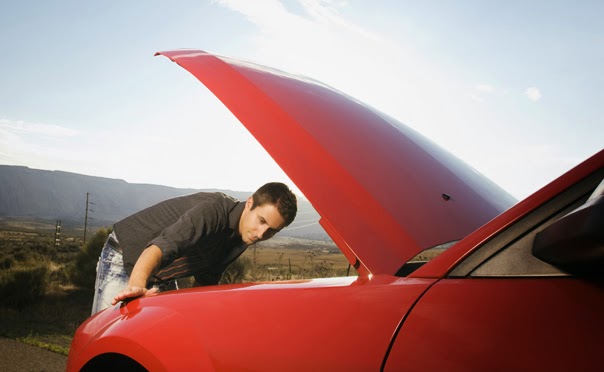 Nothing is worse than putting your key in the ignition, turning it, and finding that nothing happens. When you need to get somewhere, and your car if refusing to take you there, what do you do? Take a look below for some troubleshooting tips to find out what has gone wrong, and whether you can fix it without a call to the tow truck, and instead by listening and observing.
Nothing is worse than putting your key in the ignition, turning it, and finding that nothing happens. When you need to get somewhere, and your car if refusing to take you there, what do you do? Take a look below for some troubleshooting tips to find out what has gone wrong, and whether you can fix it without a call to the tow truck, and instead by listening and observing.
Your first course of action should be to consider whether the battery has been drained. Not only is this easy to diagnose, it is one of the easiest fixes. To figure out whether it is the battery, simply turn your key as if to start the car, and listen carefully. Do you hear a sort of clicking noise? If so, this is great, and exactly what you want to hear. It simply means that the battery is the most likely candidate as to why your vehicle will not start; the clicking noise usually signals that the battery desperately trying to kick-start on yet does not have enough charge. If it is a depleted battery, simply ask a friend to help you jump start your car with jumper cables.
Unfortunately, that clicking noise is not always a signal that the battery has malfunctioned. Another possible candidate is that the starter is dead. If even after having received a jump from a buddy and the vehicle refuses to turn on, instead continuing to make clicking noises, than the starter is a likely candidate. If this is the case, the possible reason could be a loose connection coming out the starter, so flip the hood and observe every cable for any possible issues.
What happens if you do not hear anything when you attempt to turn on the vehicle? If so, make sure to double check the battery terminal cable connections. Oftentimes, the cable connections can become incredibly corroded on older batteries, leading to a poor connection. If your battery appears to have corroded connections, carefully use a screwdriver with an insulated or wooden handle to force the space between the terminal post and connector, and firmly twist it. After you have completed this, attempt to turn the vehicle on. If your vehicle turns on, that is great! However, be aware that this is a temporary fix, and your cables will need to be thoroughly cleaned or even replaced in the near future.
Vehicles are complex machines, and as such, there is seemingly never-ending reasons as to why something has gone wrong. If these tips do not work for you, give your mechanic a call and ask for a second opinion.

